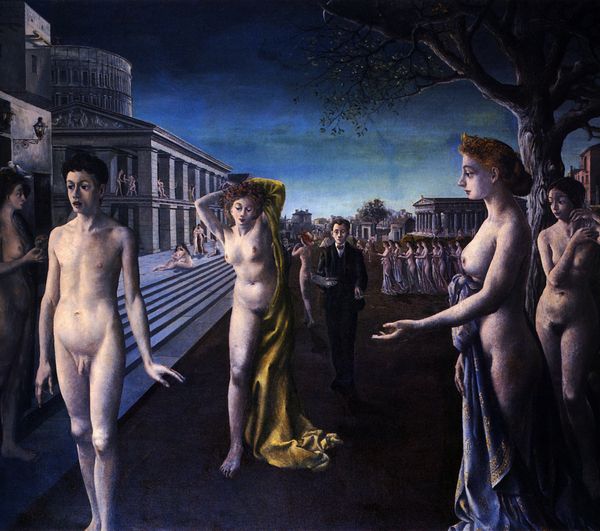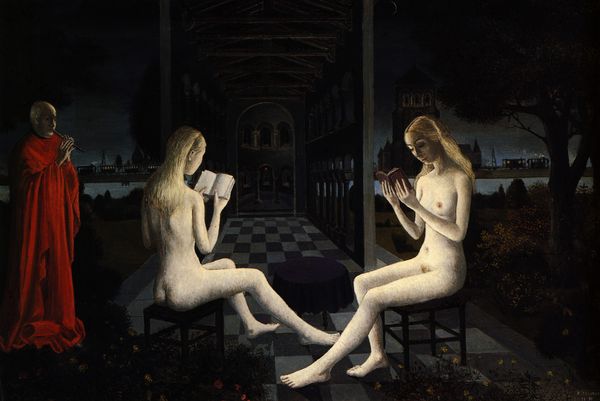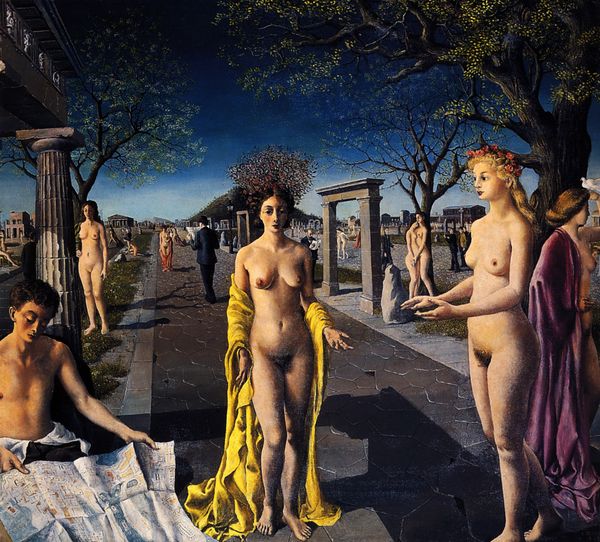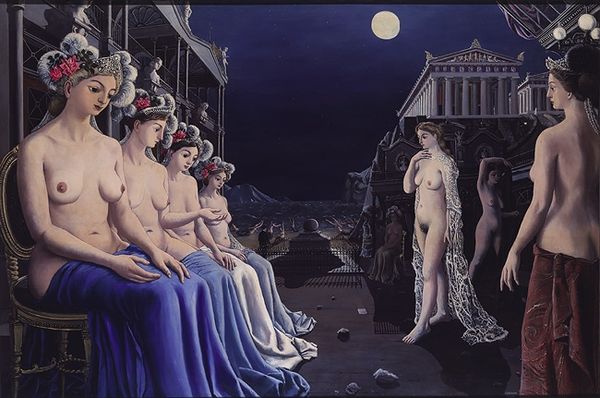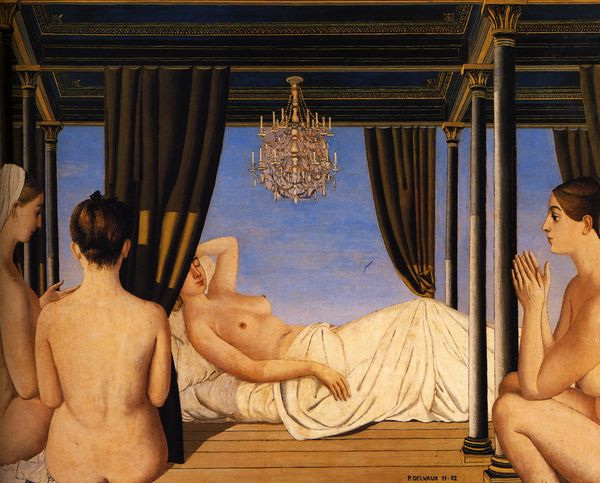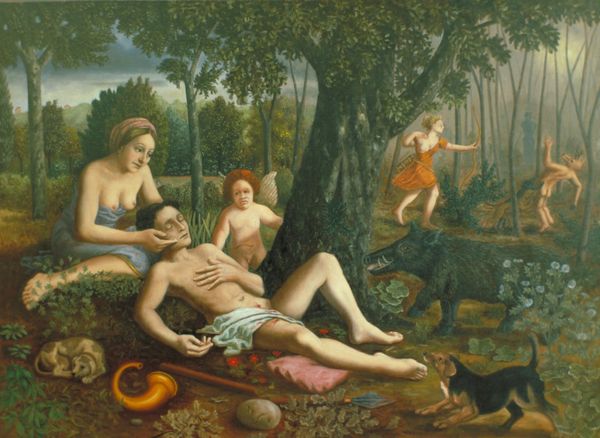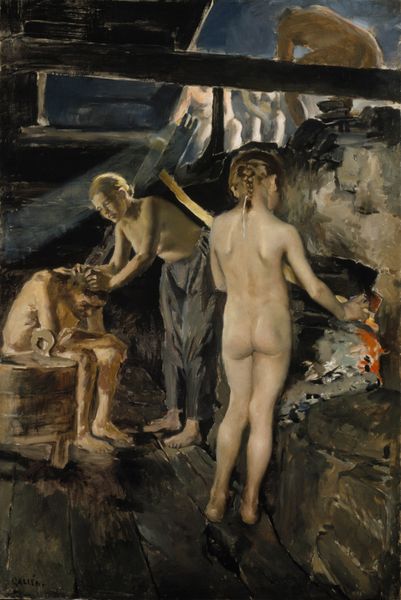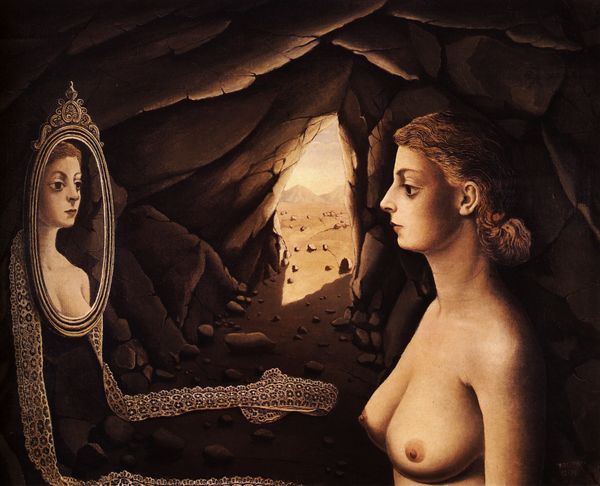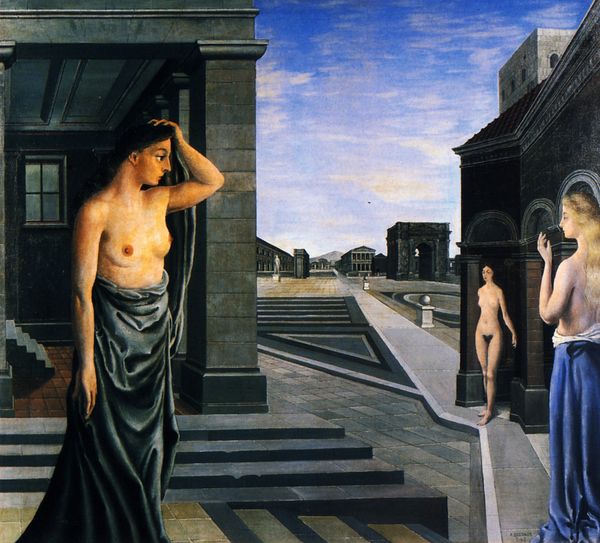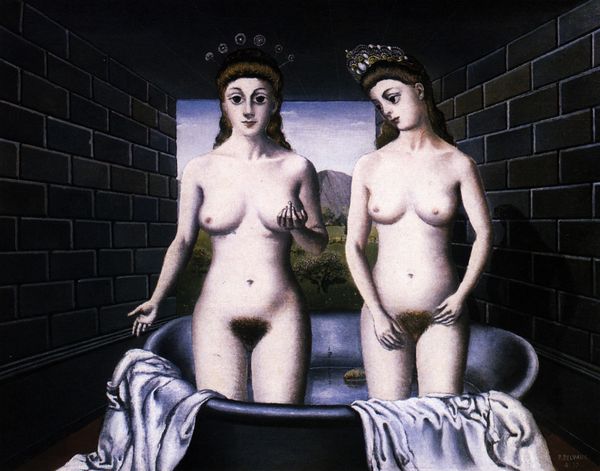
painting, oil-paint
#
allegory
#
painting
#
oil-paint
#
landscape
#
fantasy-art
#
figuration
#
female-nude
#
surrealism
Dimensions: 160 x 260 cm
Copyright: Paul Delvaux,Fair Use
Editor: So this is "The Sabbath" painted by Paul Delvaux in 1962. There is this very odd atmosphere, this dream-like gathering in a dark landscape with nude women and formally dressed men in a mirror. I'm finding it incredibly surreal and unsettling, especially the way the candlelight flickers. What strikes you most about this work? Curator: Ah, yes, Delvaux, the master of the uncanny. To me, this painting hums with a quiet, insistent tension. Look at how the figures are arranged – a tableau vivant, almost theatrical, yet utterly silent. They are there, and not quite there at the same time, as in a haunting memory. Do you see how Delvaux echoes classical mythology, and reinterprets the female form through the lens of Surrealism? Editor: I see the echoes of classical nudes, yes, but it feels very detached, like they're mannequins. And the men in the mirror... they seem like they're observing, not participating. Curator: Precisely! This distance, this voyeuristic quality, is central. It’s a world seen through a glass darkly. This is less about the biblical Sabbath, more about personal psychic rest. He sets up scenes like stage sets with familiar Delvaux themes: dream states, sexuality, existential quietude. There's even an interesting juxtaposition of shadow and light! Editor: So, the women might not be people as such. The composition feels less like a story and more of an emotion rendered into something visual, wouldn't you say? Curator: An emotion given form. A reverie manifested, then framed on canvas. It’s what resonates most strongly in these dreamscapes of Delvaux. Perhaps even a half remembered dream. I learned some thing by remembering to listen. Did you? Editor: Absolutely, It’s fascinating to think about art as a form of rendering feeling rather than depicting a scene.
Comments
No comments
Be the first to comment and join the conversation on the ultimate creative platform.
